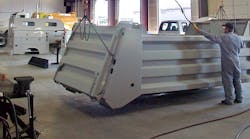It will come as no surprise to most of you that the demand for technicians is rising. In fact, Ian Hardie, director of employment services at Universal Technical Institute, highlighted statistics from the Bureau of Labor Statistics’ 2017 Employment Outlook Summary that indicate there is a need for 100,000 new automotive and diesel technicians each year through 2026.
Speaking at a recent NationaLease meeting, Hardie said the demand for auto/diesel techs outstrips supply 2:1. There seems to be a lack of interest in becoming a tech. Add to that fact that about half of all service technicians are eligible to retire between 2013 and 2028, and you can see the enormity of the problem.
Hardie listed three reasons why the technician supply is falling:
- The current strong economic climate means good jobs are relatively easy to come by without an education.
- The increasing cost and declining outcomes of traditional colleges have people questioning the return-on-investment when it comes to further education.
- Old stereotypes about what it means to be an automotive or diesel tech still persist despite the innovation and technology that is now rampant in the vehicle maintenance and repair sector.
All of this has led to a shift in the employment cycle. In years past a student enrolled in technical school got an education, graduated and then was recruited and hired. Today students enroll in school, begin their education, are recruited and hired and then graduate.
“Employers who wait to recruit at graduation are too late,” Hardie said. “Top students are being hired before graduation.”
In order to attract the best and brightest, the norm today is for prospective employers to offer hiring incentives. In many cases, employers are offering tuition reimbursement or other hiring incentives including sign-on bonuses, relocation, tool vouchers/tool gifting programs, retention bonuses, etc.
According to Hardie and UTI, a successful hiring program contains the five following elements.
- Post jobs: Develop a process to post technician openings so they get exposure across all UTI campuses.
- Formalize verification process: Create a process that allows UTI to receive verification from you as an employer-partner.
- Campus presence: Recruit in-person at campus location. Participate in career fairs, PAC meetings, or set up organized interview days on campus.
- Hiring incentives: Provide a comprehensive hiring incentive package that includes student loan repayment assistance, sign-on bonuses, relocation packages, tool programs, etc.
- On-boarding program: Develop mentoring and training programs to onboard new hires. Create internships and part-time employment opportunities for students while they are still in school so they can gain industry experience.
The technician shortage is real, so you need to have processes in place to make sure you are doing all you can to entice students enrolled in technician training programs to come work for you.



